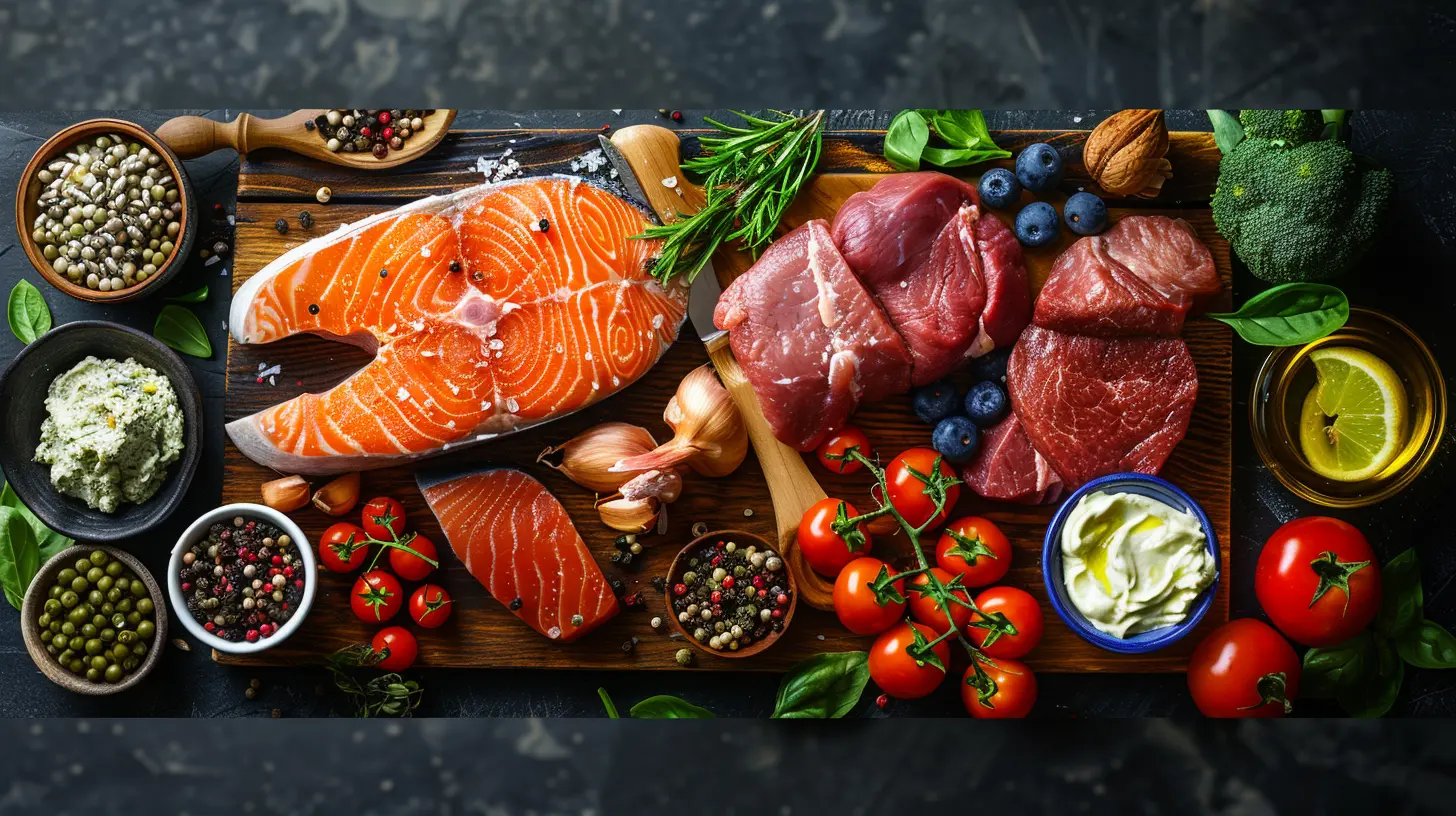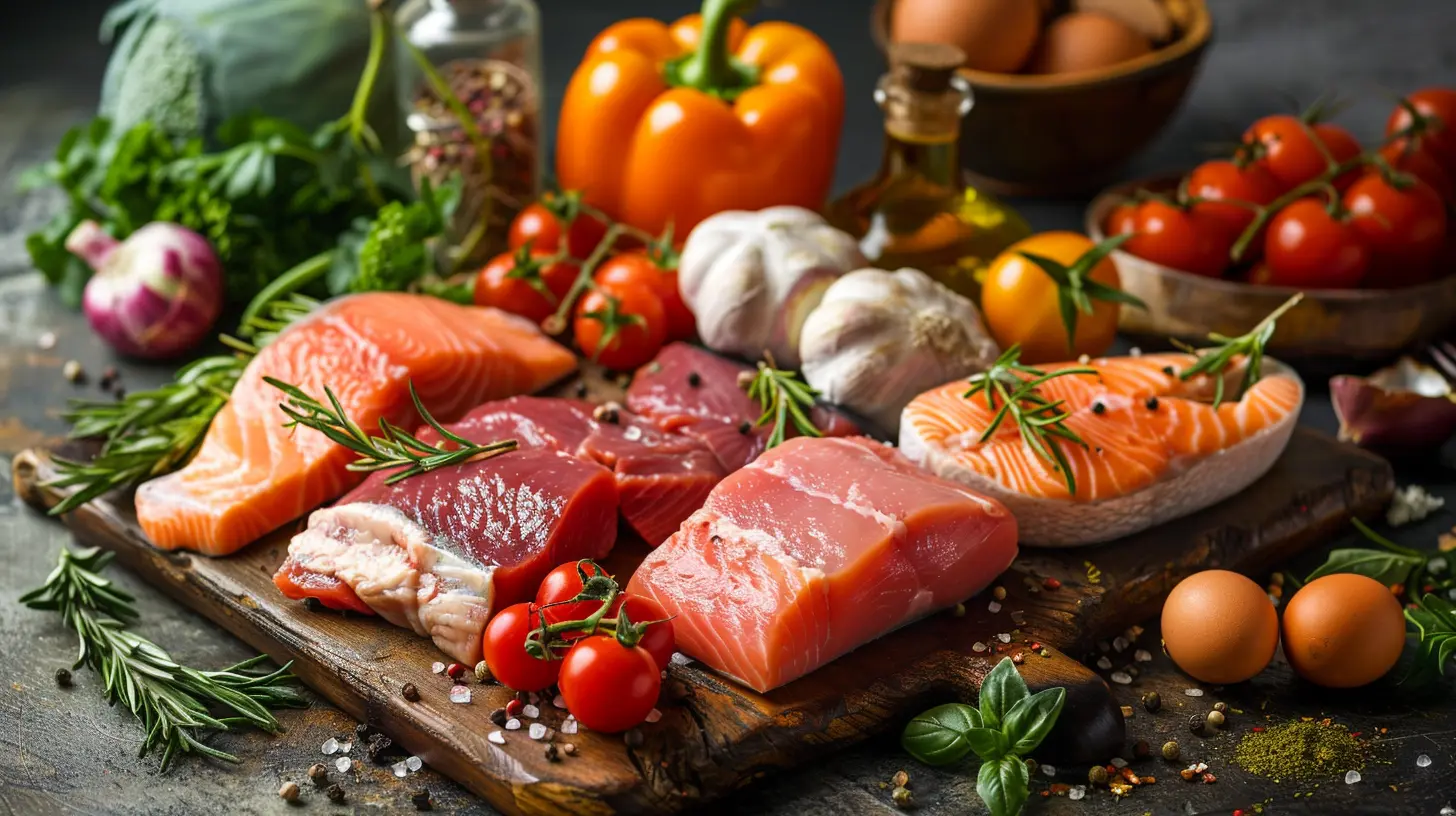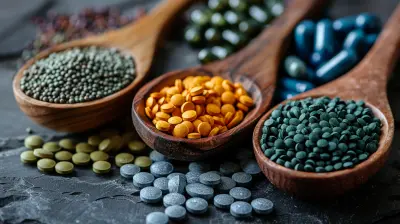Paleo for Women: What You Need to Know
3 November 2025
Let’s be real: trying to navigate the world of diets is like walking through a jungle without a map. There are a million different paths, and somehow, they all promise to be the best. Keto, Mediterranean, vegan, carnivore—the list goes on. But one that’s been catching (and keeping) a lot of attention lately is the Paleo diet. Now, if you’re a woman thinking about going Paleo, you might be wondering—does this actually work for me? Does it support my hormones, energy, and weight loss goals?
Well, buckle up, because we’re diving headfirst into the world of Paleo for women. Spoiler alert: it’s not just about eating like a caveman.
What Is the Paleo Diet, Anyway?
Let’s start at the beginning. The Paleo diet is based on the idea that modern humans should eat more like our hunter-gatherer ancestors. Think whole foods, fresh veggies, nuts, seeds, fruits, lean meats, and fish. What it doesn’t include? Processed foods, sugar, grains, dairy, and legumes.In short, Paleo is like pressing the nutritional reset button.
But here's the thing—just because our ancestors ate a certain way doesn’t mean it’s a one-size-fits-all approach, especially when we consider things like female physiology, hormones, and modern lifestyles. That’s where things get interesting.
Why Paleo Isn't Just a "Man's" Diet
You hear Paleo and the first image that might come to mind is a bulky guy gnawing on a steak. But ladies, don’t let the caveman stereotype fool you. Paleo can be incredibly effective for women—but there’s a twist. Our bodies, hormones, and nutritional needs are different, and we experience certain things men simply don’t, like menstrual cycles, pregnancy, menopause, and hormonal fluctuations.Let’s unpack that, shall we?
The Hormone Connection: Where Paleo Shines and Slips
Hormones are our body’s messengers—they control everything from our mood to metabolism, to reproductive health. And trust me, they don't take kindly to sugar crashes or ultra-processed snack bars.How Paleo Supports Hormonal Balance
Going Paleo means ditching processed foods and refined sugars, which is already a big win for your hormones. These troublemakers wreak havoc on insulin levels and fuel inflammation—two things that can throw your hormonal balance completely off.By focusing on whole, nutrient-dense foods like leafy greens, eggs, and wild-caught fish, Paleo can help regulate hormones like estrogen, progesterone, and cortisol. That means better periods, fewer mood swings, and more stable energy. Yes, please!
But Here’s the Catch...
Some women, especially those who are very active or under chronic stress, might find strict Paleo too low in carbohydrates. And that matters—because carbs play a key role in hormone production, particularly in regulating ovulation and maintaining hormonal equilibrium.In other words, going too low-carb on Paleo might cause issues like irregular periods, lowered libido, or even adrenal fatigue. Not exactly what you signed up for, right?
So if you’re going Paleo, it’s smart to include healthy carb sources like sweet potatoes, fruits, and even some starchy veggies. Paleo doesn't have to mean low-carb—it’s all about balance.
Can Paleo Help with Weight Loss for Women?
Ah yes, the million-dollar question. The short answer? It totally can—but weight loss is a byproduct, not the whole mission.Here’s what's happening under the hood:
- Reduced inflammation: A cleaner diet means less bloating, puffiness, and joint pain.
- Improved blood sugar levels: Stable energy means fewer cravings and energy crashes.
- Better digestion: Cutting out gut irritants like gluten and soy helps your digestive system work more efficiently.
And guess what? When your body isn’t stressed out, holding onto weight for dear life, or constantly fighting inflammation, it naturally starts to release excess fat.
But Remember, Slow and Steady Wins the Race
Particularly for women, rapid weight loss can backfire by messing with hormones, especially if calories are severely restricted. Paleo works best when combined with mindful eating and self-care—not obsessive rules or restriction.Bone Health and Nutrition: Why It Matters More for Women
Let’s talk bones. Women are more prone to osteoporosis, especially post-menopause, due to declining estrogen levels. Now, you might be thinking: “Wait... If Paleo cuts out dairy, doesn't that mean less calcium?”Great question. Yes, dairy is a major source of calcium—but it’s not the only one.
Paleo-approved foods like leafy greens, sardines (bones and all), broccoli, almonds, and bone broth are incredibly rich in calcium and magnesium. Plus, the high vitamin D content from fish like salmon helps your body actually absorb that calcium.
And unlike processed dairy products, these sources don’t come with pesky inflammatory side effects. Win-win.
PMS, Cravings, and Mood Swings: Can Paleo Help?
PMS feels like nature’s monthly prank—bloating, cravings, crankiness, fatigue. But guess what? Paleo might just be your secret weapon.Here’s how:
- Stable Blood Sugar: No sugar spikes means less rollercoaster energy and mood swings.
- Healthy Fats: Foods like avocado, coconut oil, and olive oil support hormone production.
- Minerals: Paleo foods are rich in magnesium and zinc, which help reduce PMS symptoms.
Plus, cutting back on caffeine and alcohol (even if just for a while) can calm your nervous system and reduce anxiety and irritability around your cycle.
Fertility and Pregnancy on Paleo
Trying to conceive or already pregnant? Paleo can be a great foundation because it’s focused on nutrient-dense, unprocessed foods that nourish both mama and baby.Key nutrients like folate, iron, omega-3s, and choline (all found in Paleo-friendly foods like liver, eggs, and leafy greens) are essential for fertility and fetal development.
But again—don’t skimp on carbs. Women trying to conceive or pregnant need more calories and carbs to support hormone production and growing a tiny human.
Menopause and Paleo: A Natural Ally
Menopause can feel like the Wild West of hormones, but Paleo can help tame the chaos. Reducing sugar and processed foods eases inflammation and hot flashes. Meanwhile, healthy fats support hormone production, and plenty of fiber helps keep digestion (and those pesky weight changes) in check.Plus, bone broth and collagen-rich foods support joint and bone health—which is super important as estrogen levels start to dip.
Adapting Paleo for YOU: Tips for Women
So, how do you make Paleo work for your unique body and lifestyle? Here are some tried-and-true tips:1. Personalize Your Carbs
Don’t go zero-carb unless you’ve got medical supervision. Add in sweet potatoes, squash, berries, and even the occasional banana, especially during the luteal phase of your cycle (when energy dips and cravings spike).2. Prioritize Sleep and Stress Management
No diet in the world can make up for poor sleep or chronic stress. Practice mindfulness, get sunlight, and stick to a bedtime routine. Your adrenals will thank you.3. Eat Enough (Seriously)
If you’re always tired or cold on Paleo, you might not be eating enough—especially fats. Don’t fear them. Creamy avocados and coconut milk are your friends.4. Listen to Your Body
Your body is smarter than any diet. If something doesn’t feel right—like hair loss, irregular periods, or fatigue—adjust accordingly. Paleo isn’t dogma; it’s a framework.Common Misconceptions About Paleo for Women
“I can’t do Paleo—I need cheese!”
Totally hear you. But you might be surprised how little you miss it once you try alternatives like coconut yogurt or cashew-based sauces. And remember, you can always adapt Paleo principles without going 100% strict.“Paleo is too restrictive.”
It can be, if you treat it like a checklist. But the core idea is simple: eat whole foods that nourish your body.“It’s just another diet fad.”
While it may seem trendy, the focus on nutrient-packed, real food has stood the test of time—and science backs a lot of it up.Real Talk: Is Paleo Right for You?
Here’s the deal: there’s no perfect diet for everyone. But if you’re looking for a meaningful way to reduce inflammation, balance hormones, feel more energized, and nourish your body with whole foods, Paleo can be a powerful tool—especially when tailored to a woman’s unique hormonal cycle and lifestyle.It’s not about going back to the Stone Age. It’s about rediscovering a way of eating that works with—not against—your body.
So maybe don't call it a diet. Think of it as a lifestyle experiment. Test, tweak, and see how your body responds. And remember—you’re in the driver’s seat.
Final Thoughts
Paleo isn’t a magic bullet, but it’s a solid starting point for women who want to feel more in tune with their health. The key lies in personalization—finding the balance that keeps you thriving, hormonally happy, and full of energy. Because let’s be honest—feeling good in your body isn’t just about what you eat… it’s about how you live.So, are you curious enough to give it a shot?
all images in this post were generated using AI tools
Category:
Paleo DietAuthor:

Arthur McKeever
Discussion
rate this article
1 comments
Erin Jimenez
This article offers a comprehensive overview of the Paleo diet tailored for women, highlighting its potential benefits, such as improved energy and weight management. It also addresses women-specific nutritional needs, emphasizing the importance of balanced macronutrients and micronutrients for optimal health and wellness. A must-read!
November 7, 2025 at 5:07 AM

Arthur McKeever
Thank you for your thoughtful comment! I'm glad you found the article helpful and informative. Your insights on the Paleo diet for women are greatly appreciated!


